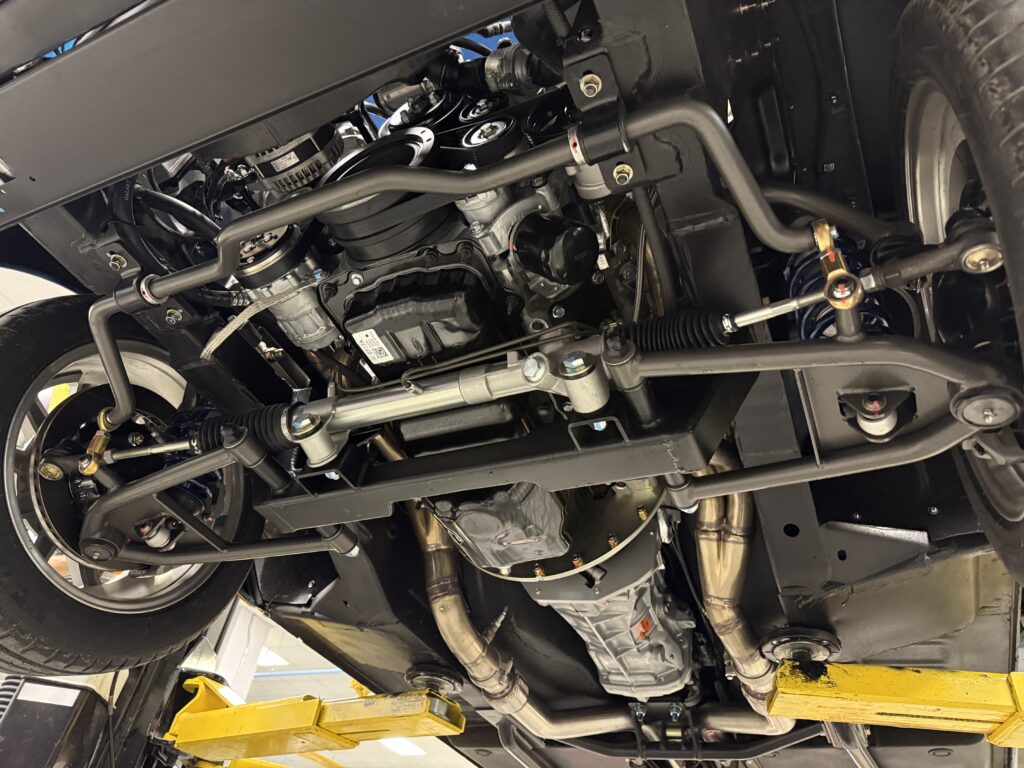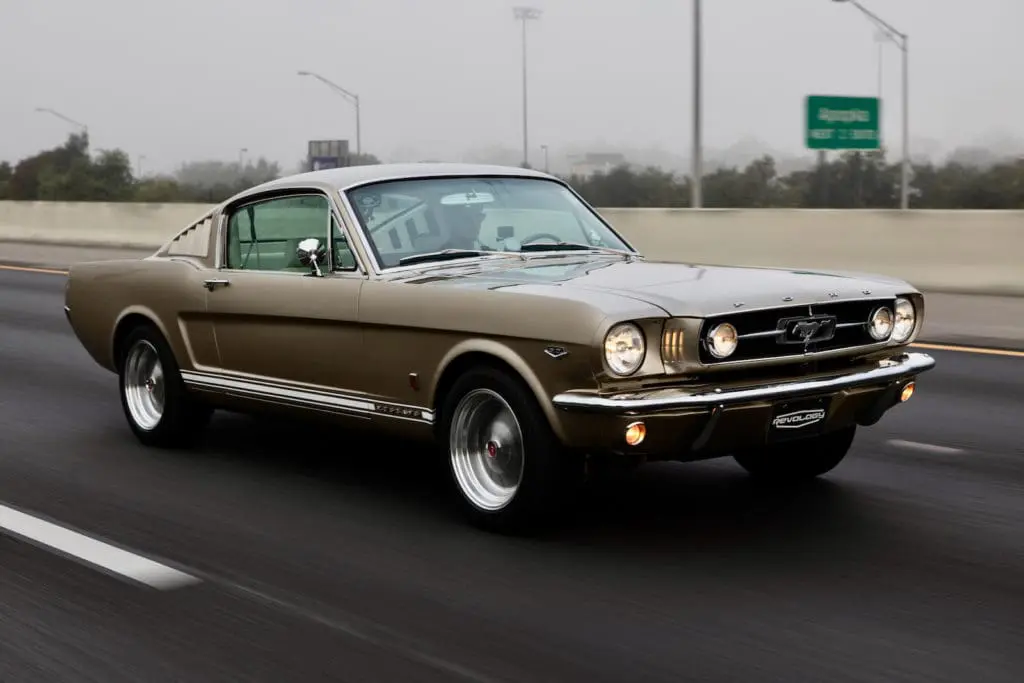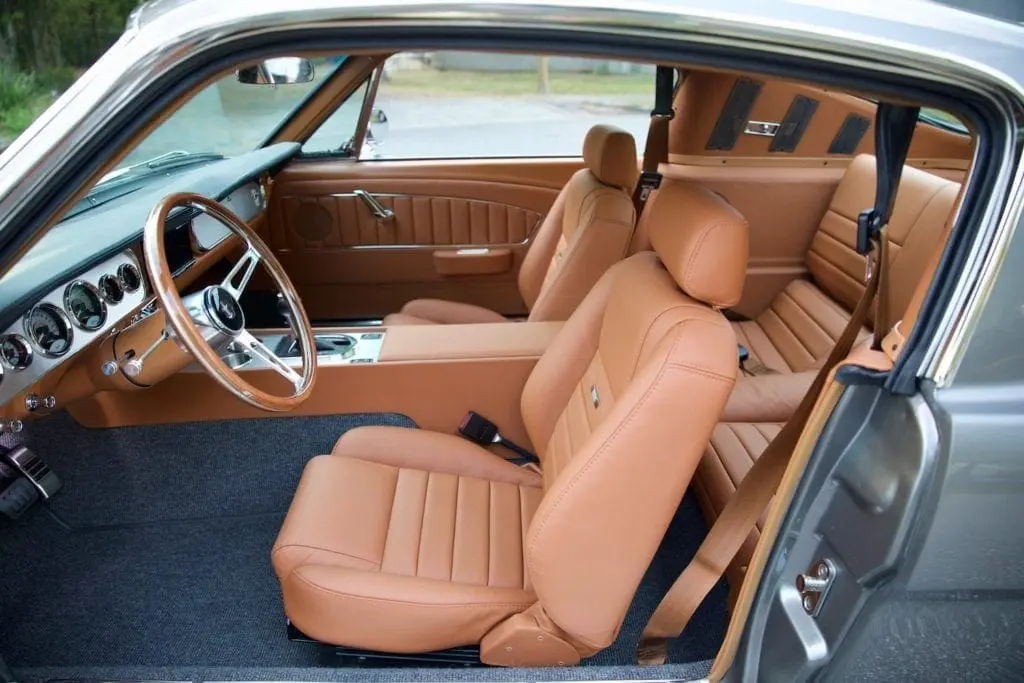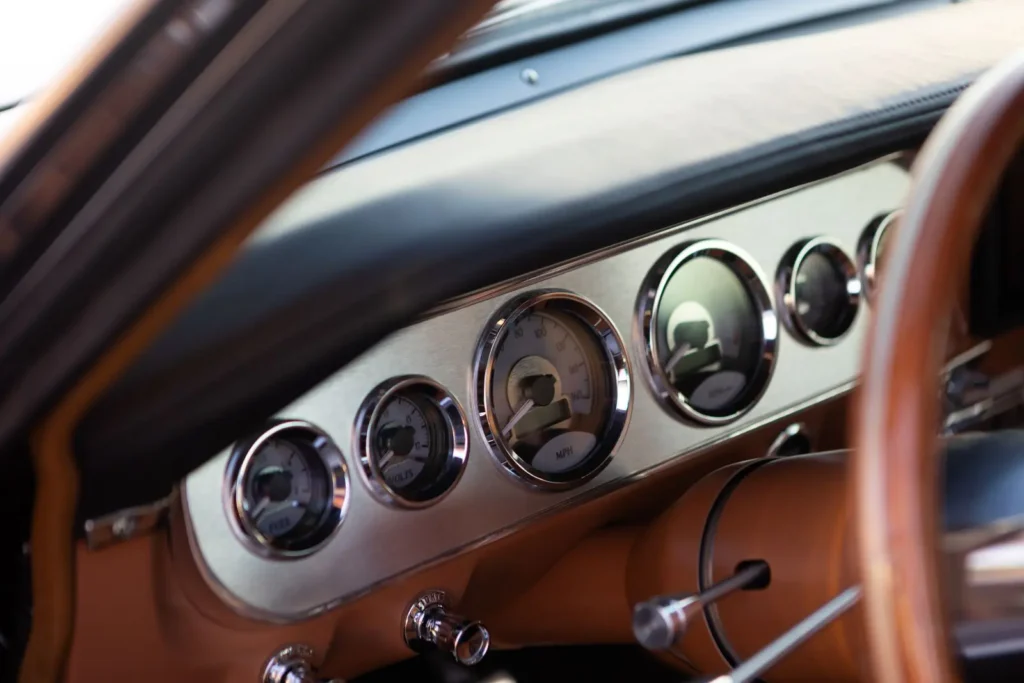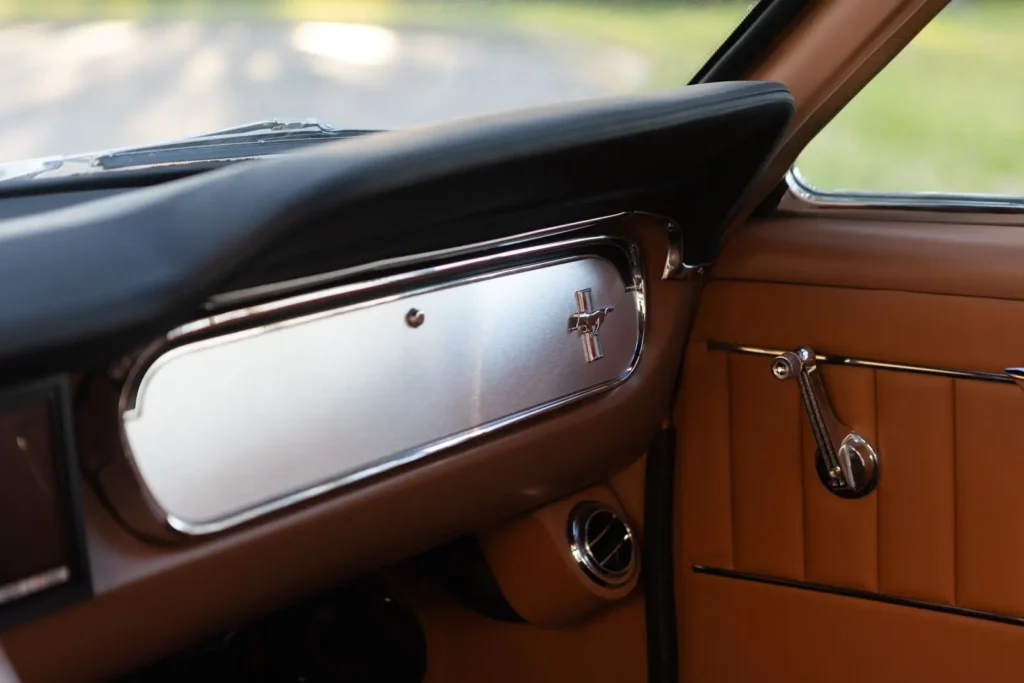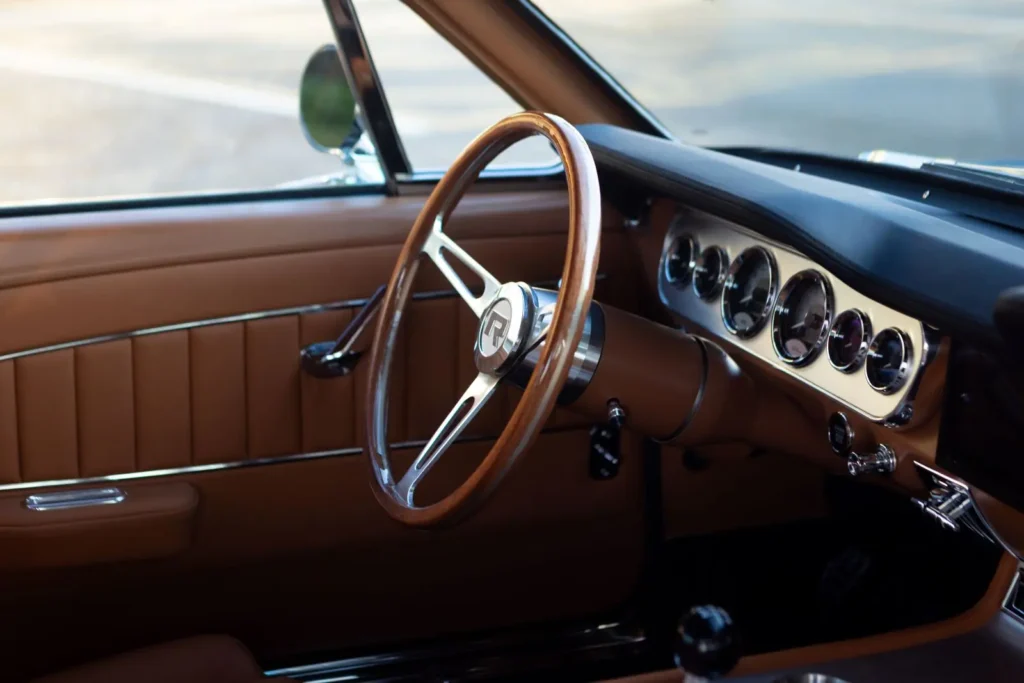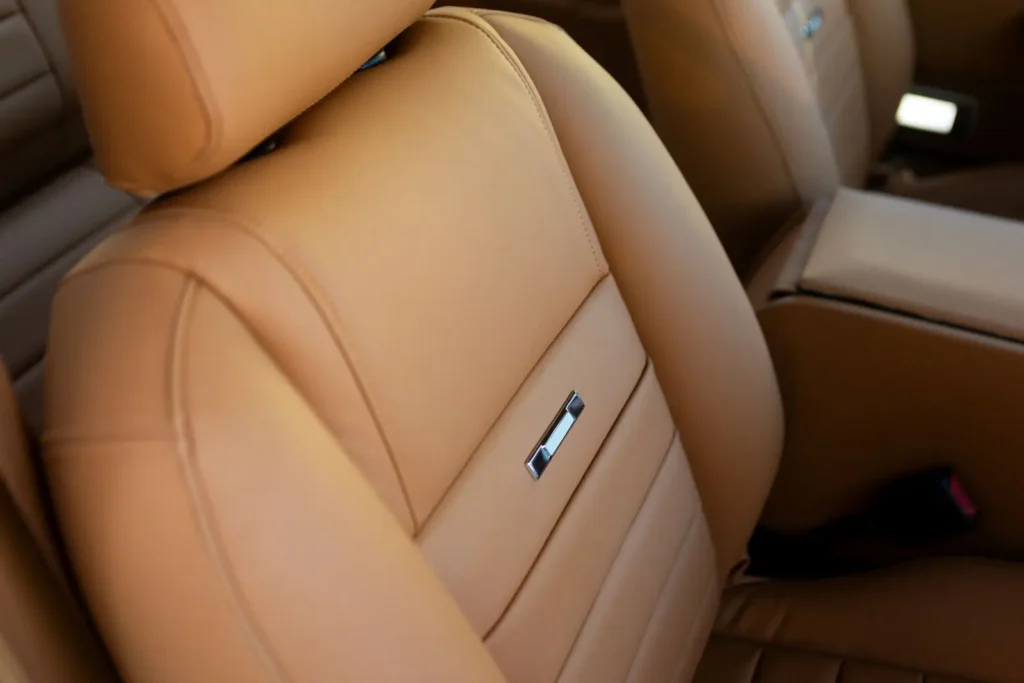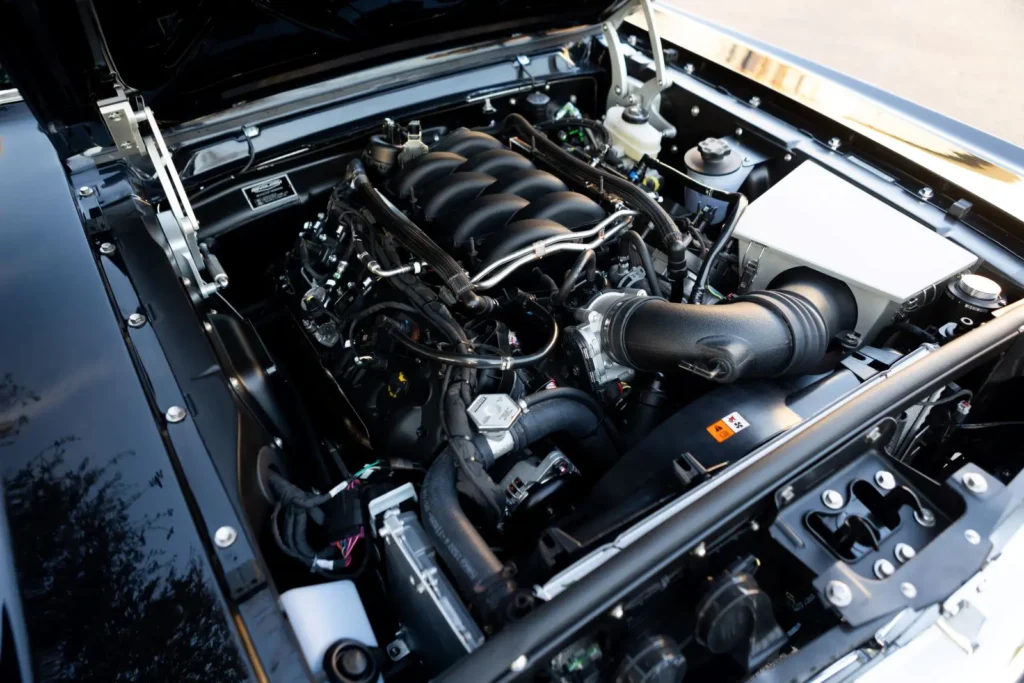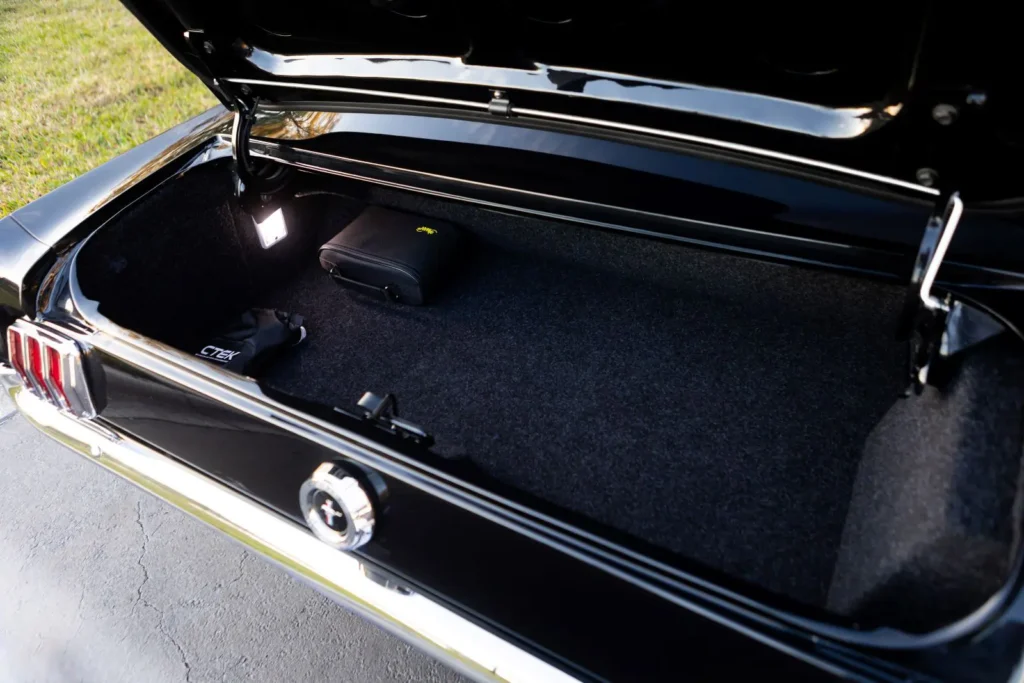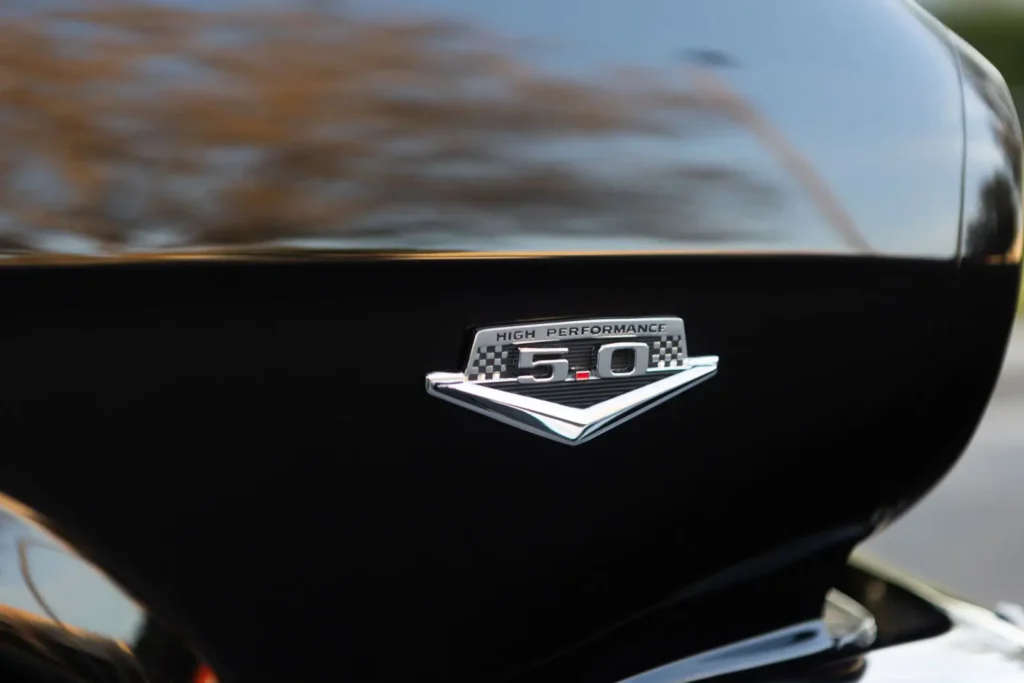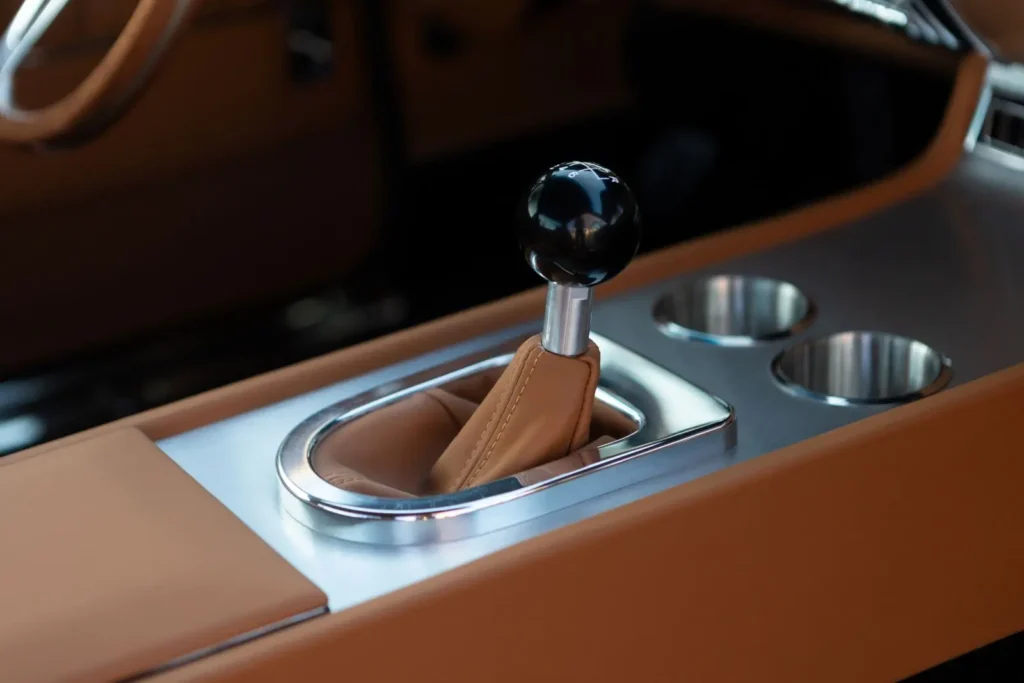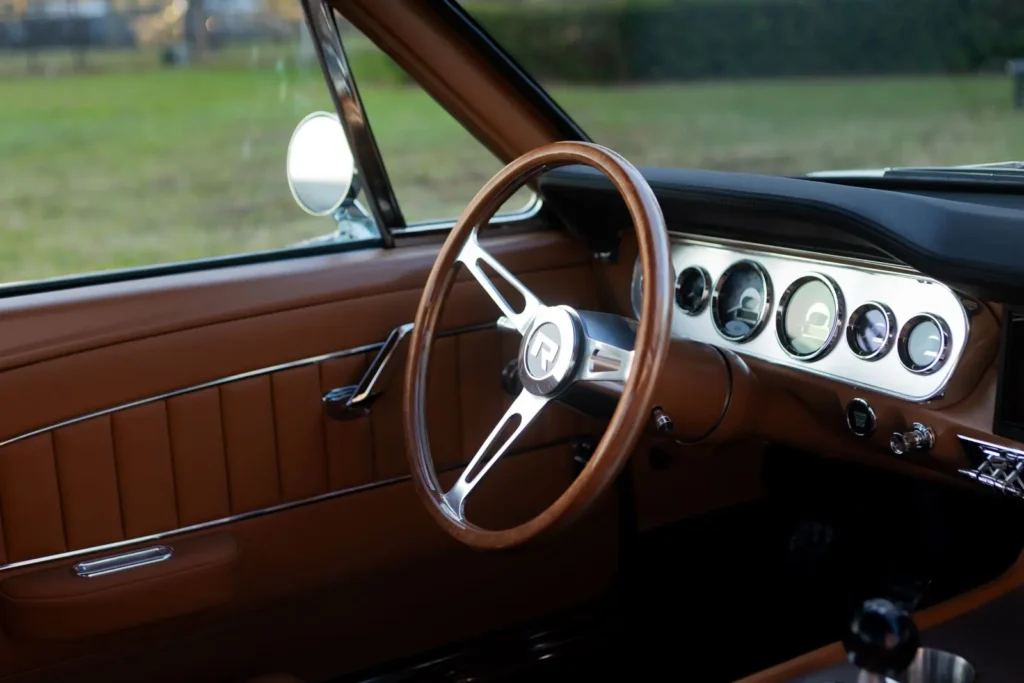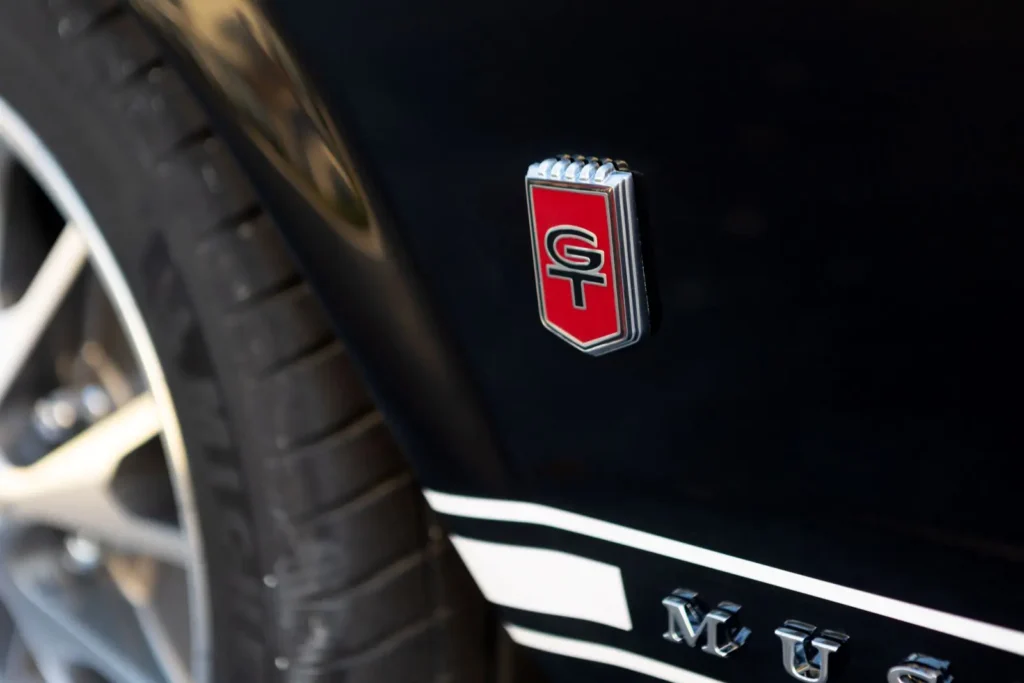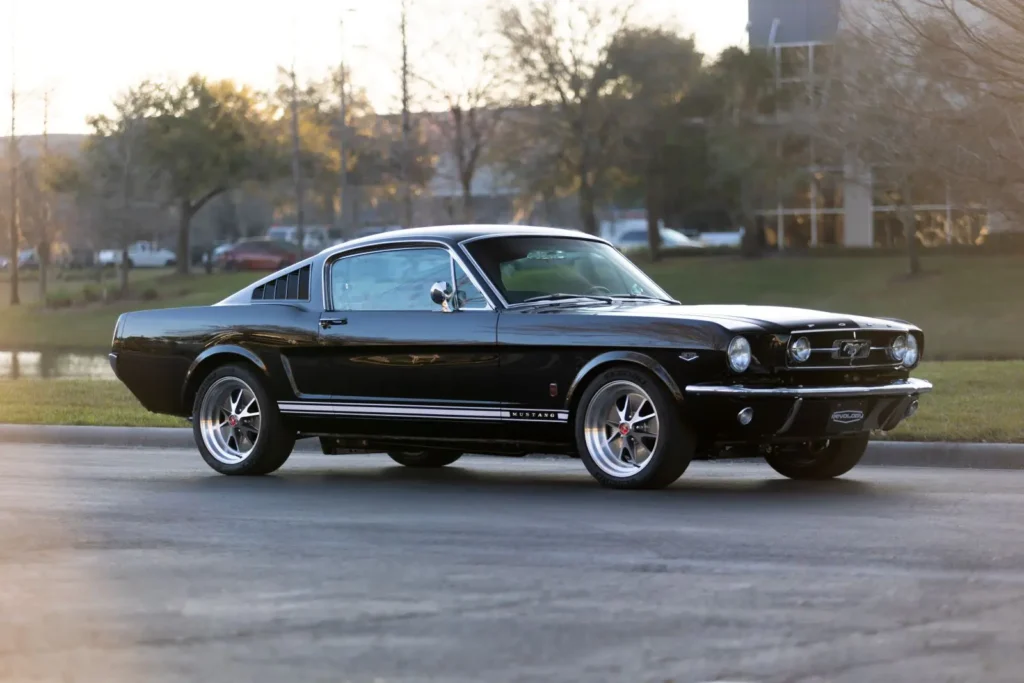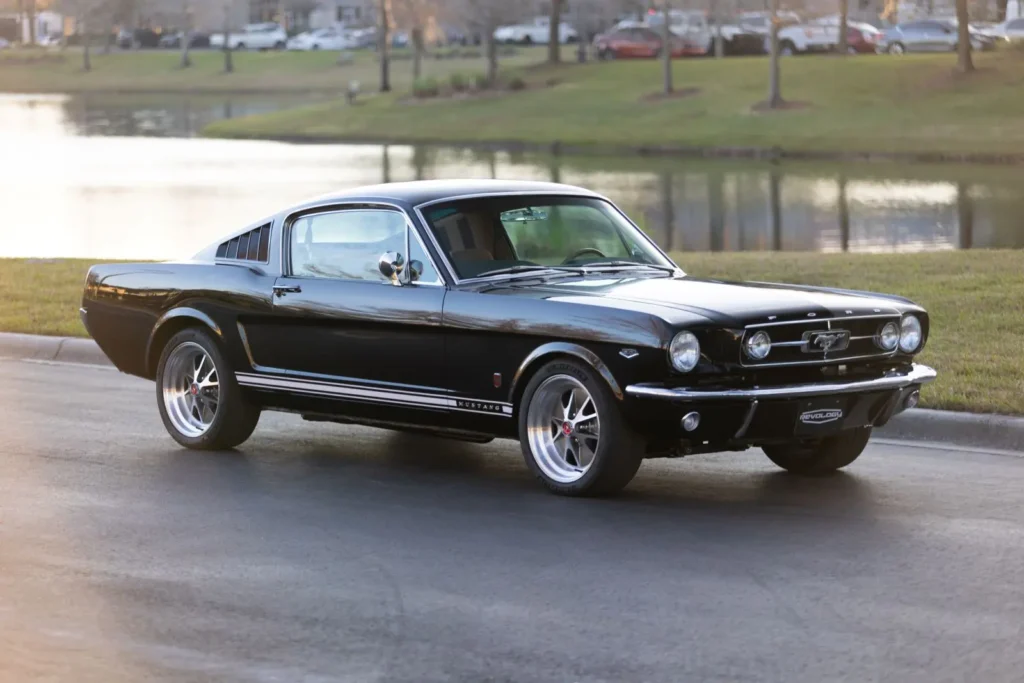Hi, I’m Tom Scarpello of Revology Cars, and this is car number 78, a 1966 Mustang 2+2 Fastback in Porsche Meteor Gray Metallic with BMW Terracotta leather interior. One of the great things about ordering a Revology Mustang is you can have it built to your specifications. And color and trim options are almost infinite.
Now, this client is a BMW enthusiast. And she wanted to have a BMW interior in her Revology Mustang. So, we worked with her very closely to spec out this beautiful BMW Terracotta leather. It’s Terracotta in most of the interior. Then, of course, the dash is also a BMW leather. This is black, and it just looks beautiful. She’s chosen the six-dial gauge cluster with the aluminum trim. These are brushed aluminum inserts that are laser cut to our specification. Everything is totally integrated. Looks like it could have been a factory package back in the 60s.
So, one of the most enjoyable aspects of having a Revology car built for you is that you design it. You choose the color and the trim and the options. Ten to twelve months later, your creation arrives. A lot of the cars we build are representative of original color combinations, and they look very, very much period correct. But some clients, and it’s actually happening more and more, where people take some liberties with the original colors and trim and spec out a different exterior color or different interior leather. And this is a great example of that.
So I think this is a gorgeous combination. Looks like it could have been an original color combination. Just very well executed. One of the reasons we can do something unique like this bespoke interior is because we do it in house. Now, a lot of companies will farm out things like upholstery, paint, or even body. We are completely vertically integrated.
In 2019, we started doing all of our paint in house. In 2020, we started building the unibodies in house, and that was really necessary for us to be able to consistently achieve the cost, quality, and timing objectives.
There’s a lot of discussion about you should outsource things that are not your core competency. Okay, I get that. We outsource HR, we outsource accounting, we outsource legal, things like that. But when it comes to actually building the car, I think everything that has to do with building the car must be a core competency. And controlling everything in house is really the only way that we found to be able to do all three. This has been going on in the auto industry forever.
For example, between Toyota and Nissan, you go back to the very earliest roots of those companies where Toyota, their philosophy was always about studying the competitor’s product, taking it apart, understanding exactly how it went together, and then designing their own version.
Whereas Nissan, in contrast, would go out, find a competitor that had a product that they liked, and they’d license it. So, a different philosophy. Does it really matter? I would argue it does matter. You look at Toyota and Lexus quality consistently year after year after year after year after year at the top.
More recently, this whole discussion is also coming up in the EV space. Tesla does its cars completely in house. Fisker, on the other hand, they’ve announced their plans are to outsource the manufacturing of the cars, to farm that out, or to not have control over how your product is built, when it’s an automobile, I just don’t see how that works. But what do I know? I just run a little car company in central Florida.
For us, Toyota production system is the way to go. It’s knowing every single bolt and nut and fastener and spot weld and everything and just optimizing every aspect of the process. It’s the only way you’re going to be able to deliver that kind of quality, and that’s what we’re always aspiring to do at Revology Cars.







